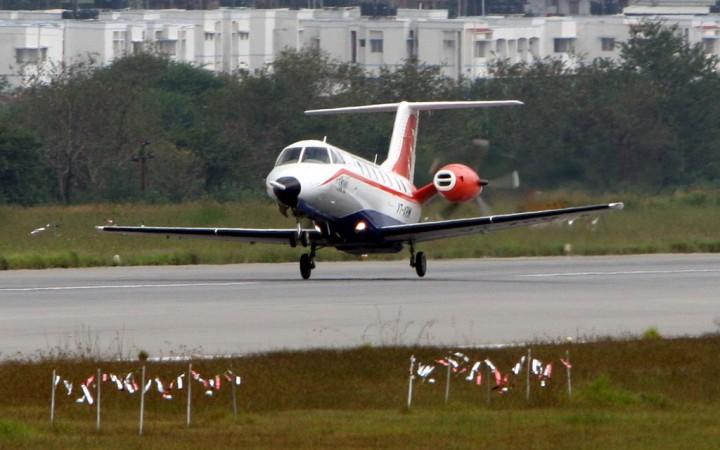
National Aerospace Laboratories (NAL), India's second largest aerospace firm after Hindustan Aeronautics Limited (HAL), has decided to revive decade-old aircraft programmes that have almost been shelved or shut down. The facilities at the lab are also being refurbished to give NAL a new look and purpose. Currently, NAL is desperate to showcase its aircraft development programme skills, having come under severe criticism from several quarters.
The aircraft programmes have suffered delays and Indian scientists have not been able to develop key aircraft technologies, barring the flight control system, to have India's aircrafts flying. But now things will change, says Union Science and Technology Minister Harsh Vardhan.
NAL has charted out a road map to revive the 14-seater SARAS aircraft. The go-ahead has been given for flight testing and evaluation of SARAS PT1N aircraft. "Shortly we will be starting the flight tests with ASTE team and engine ground tests are initiated. We will be moving towards building an aircraft that will meet the requirements of the IAF," Jitendra Jadhav, NAL Director told International Business Times, India.
The SARAS aircraft will undergo 25 test flights through this year and at the end of the flight testing, two prototypes of the aircraft will be built, which would cost around Rs 400 crore. The plan is to build a 14-seater aircraft and based on its performance, a 19-seater will be built.
A Next Generation Hansa aircraft, a two-seat all composite light aircraft for flying training, is also being built. This aircraft will be manufactured in a year's time and the production responsibility has been given to Madhya Pradesh-based Mesco Aerospace. Apart from hobby flying, the aircraft will be used as a flying platform for flight testing and experimentation.
Another aircraft, CNM 5 multi-role prototype is being developed by NAL in collaboration with Mahindra Aerospace. The aircraft had been produced first by NAL, but subsequently Mahindra took the five-seater development in collaboration with Australia. Mahindra has agreed to bring back the production of the aircraft to India and will involve NAL in developing certain technologies. CNM5 has potential in air taxi, tourism, cargo and executive project. The first aircraft may take off in 18 months.
Yet another major project that NAL is trying to revive from virtual shutdown is the 70-seater regional transport aircraft. NAL plans to develop the aircraft as a turbo-prop one. If the 70-seat version takes off, plans are also afoot to build a 90-seater.
A feasibility study has shown that 250-300 aircrafts are necessary for the Indian market, while the demand for the aircraft in international market is around 7,000. A high-power committee has suggested a model of development for the aircraft. Funding for the technology development for the aircraft has been agreed to by the Centre and NAL. The work on preliminary design is yet to commence. In all probability, a design developed some time ago would be modified and a newer version of the same may be taken up for final design.
All these projects have not had commercial spin-offs and private industry too has not been very keen to collaborate. NAL is perhaps facing severe shortage of skill in the development of civil aircrafts. The silver lining is that they have been able to get the SARAS aircraft flying, but that's surely not enough. It may take a decade more for India to declare itself a civil aircraft power like China and Brazil.








